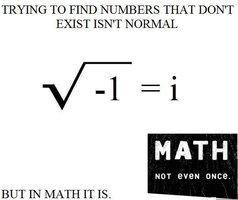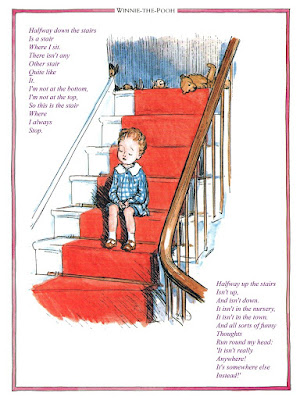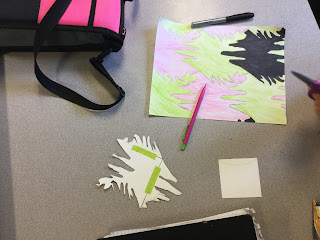Preface: Justin Aion makes wonderful wands. I made a joke about wanting to write a blogpost, then this story came to mind. Encouraged by Justin and Audrey McLaren, I decided to post it. If you have comments or suggestions, I'd gladly take them.
Ollivander's Wand Shop
Charlie (probably not the one you’re thinking of, if you were thinking of any particular Charlie) had her heart set on Ollivander’s, though her family had always gone to the Wand Mart. She didn’t have anything against her older siblings’ wands, and they did well enough in school. But she wanted her wand from the same shop Mr. Potter had gotten his. As did many, as well as the many who wouldn’t get a wand from where you know, er, Mr. Riddle had gotten his. Wand Mart had the latest Wizards Instruments wands, all cleared for OWLs testing at the factory. But Charlie had her heart set, and she usually followed that.
She knew her parents were sure they were right. Mom went to Hogwarts with a hand me down, and was very happy to send her siblings with new wands of their own. Of course, Dad had no idea before Alpha went to Hogwarts. That was a surprise owl! Wand Mart reminded him of muggle school shopping, with most things in one place. And it worked out for A & B, so why would they mess with a successful formula?
Which almost explains why she was in Diagon Alley without her parents, who assumed she was in her room at the top of the stairs packing for Hogwarts. Headmaster Granger had sent quite thorough list, organized by category and even with packing suggestions. (She recommended moleskin bags, but they were not required. The “quite simple” charm had given her parents fits. Charlie’s sister Trish had fixed it up, muttering about the arithmantic beading patterns.) Charlie mastered the packing charm in no time, only slightly illegal for a wizard of her age, and that gave her time to sneak out. If her parents thought they heard rummaging sounds, Charlie had no idea the cause.
It was her first time in the Dalley alone, and she was excited. She resisted the pull of WWW, and scouted out Ollivander’s. When there was finally a moment with an empty shop, she darted in. Mr. Ollivander’s son Mr. Ollivander was startled. He kept glancing at the door, waiting for the ubiquitous & reliably following parent or parents. Charlie blurted “Mr. ollivander my parents want to go to wand mart but i know that the wands here are better why else would mr potter have come here for a wand twice even and i thought that if you well i was imagining your father but you’re just as good i’m sure helped me pick out a wand then i could just tell them see its all done and if there’s any difference i’ll pay for it myself because i think it really matters-”
 |
Handsome Kingwood wand, which Charlie
didn't look at twice. (Justin Aion's, really.) |
“Hello! What’s your name?”
“Um, Charlie. Carlotta if it bothers you to call me Charlie.”
“Why would it -”, Gerby thought and diverted, “So, you’re about to start Hogwart’s, Charlie?”
“Yes, sir.”
“I’ll tell you that many fine wizards started with a W.I. wand, and your parents have their reasons for picking that for you.” Charlie looked crushed. “But, if you want me to help you find a suitable wand, I’d be happy to help.” Sunshine returned to the shop.
“Yes! I need a Rosewood-Unicorn hair!”
“You do?! How do you know?”
“Rosewood is what Professor Sprout had and…”
“Mr. Longbottom, I suppose?”
“Yes! I’m a Gryffindor, too!”
“You know, I hope, that the wand chooses the wizard, but we can start there.” Gerby wandered out, muttered something, boxes fell, then “Ahah,” then “Bother,” then “Ahah” again. He returned with a reddish, short and rather thick wand with a plain handle, but intricate organic looking carving up the stem.
He held out the box, and Charlie oh so gingerly plucked it from the box. It felt… warm. Funny. Shaky. “Tell me what you think and/or feel,” Mr. Ollivander said.
“It’s funny.”
“Funny how?”
“Warm. Shaky.”
“Shaky or vibrating?”
Charlie thought about the difference. “Shaky. Do you want me to swish and flick?” She raised the wand as if to stop a marauding troll.
“No!” Gerby held up both hands. “Or, yes, but remember we’re in a wand shop. Lots of magic! Just gently, with your wrist” he demonstrated with his right hand “give a wave.” Though he didn’t have a wand in hand, Charlie thought she saw a fine mist of sparks trail his pointer finger.
Charlie complied. The wand felt as if she was pushing it. Sparks emerged, but big, with random direction and pacing. “May I?” Mr. Ollivander reached out for her hand. She went to put the wand in his hand but he said, “oh, no” and lifted his left hand to be under her right hand with the wand and held his right hand flat above hers. He leaned in and hummed, and the wand hummed back.
“The rosewood is fine, but I might like to try Japanese maple. It’s rare here, but would that bother you? But the unicorn hair is not the thing at all.” Charlie grimaced. “Sorry,” he said. “That doesn’t mean you’re not a Gryffindor, though I encourage you to be open about your house.”
He reached around under the counter, muttered what must be an inventory spell, and a foil covered wand box slid into his hand. When he pulled the box inside out, well, it wasn’t a lid, but more of a drawer, Charlie was confounded. “That’s not even a wand!” It was curved. Not like a bow, but, maybe a bit of a spiral? “How do you even know what direction the spell goes?!”
Gerby said, “I know. Unusual. Every wand is different, and I won’t make you try it. Maple, as I said, Japanese varietal, with the ruby red leaves, though the wand is quite blonde. It has a kirin scale edge core. Quite lucky, said the man who procured it but still had all his digits.” Charlie set the rosewood wand in its box, and reached for the maple.
“Maple. Meh.” But when she touched it, it felt less warm than the rosewood. But comfortable. Picking it up - “ooh! This vibrates!” She swooshed it without being prompted, and it left no outward visual but instead made a sound. A fading single note?
“Ah, yes!” said Gerby. I had a good feeling about it. “Make a large circle, as perfectly round as you can.” She moved the wand as if drawing on a whiteboard, and made a shaky ellipse at best.
A disappointed, “oh.”
“Keep trying,” Mr. Ollivander said.
Charlie traced it again, and again, and again and soon the wand was drawing the circle by itself. Not exactly. Together? Somehow the circle just made sense. Mr. Ollivander rapped a knuckle in the center of the circle, and a gong sounded. Charlie giggled and Gerby laughed.
He leaned into Charlie. “The wand chooses the wizard, but the wizard learns the wand. How it is now, is good. But you will, or can, learn it. It’s a tool, which is how those W.I. … wands are made. But the understanding that works the tool is why it is your wand. I’m going to set this wand aside, and if you can convince your parents, fine. If not, know that it’s here waiting for you when you get a chance. Very nice to meet you, Charlie.”
“Thanks, Mr. Ollivander…” but he was already in the back of the shop. What an odd fellow. But - wow! What is a kirin? She was ready for whatever wand her parents picked, but she was already making the argument in her head why this was the wand. She wanted to reread Professor Granger’s list as well, with an eye for this learning idea. Somehow she had thought that Hogwarts would make her a wizard, but now she thought it might be more of her job.
Now what are the chances that Mom and Dad noticed her being gone?
































































